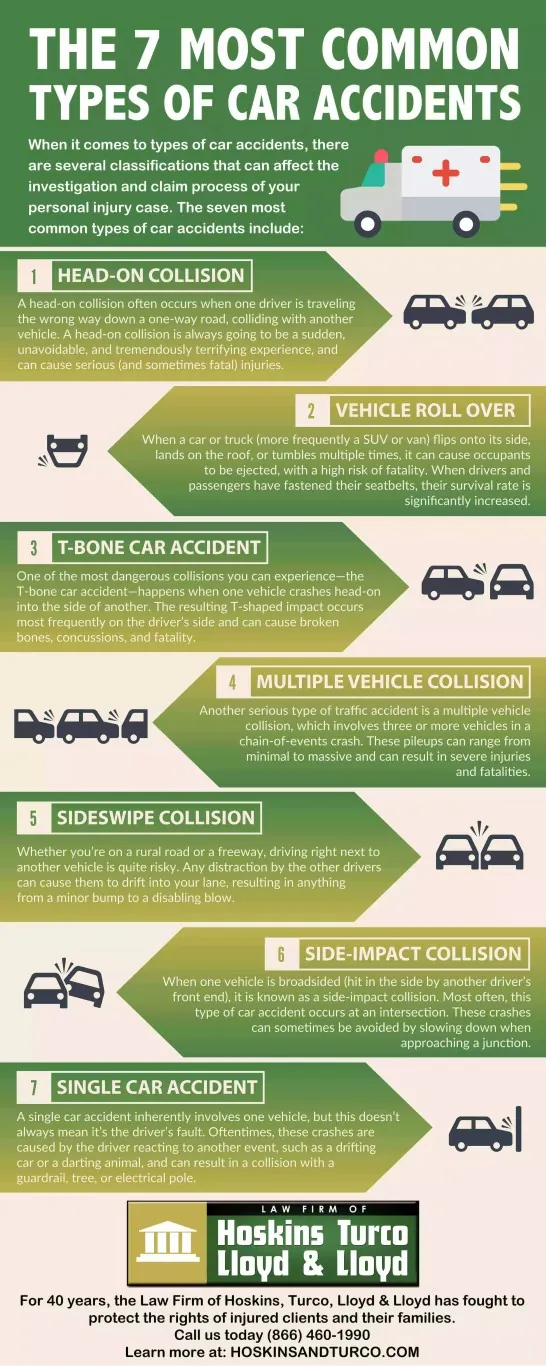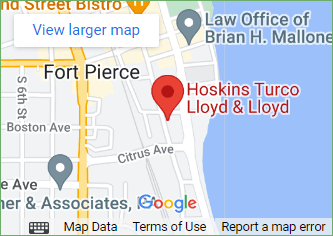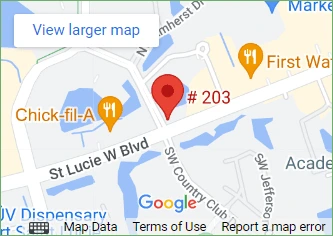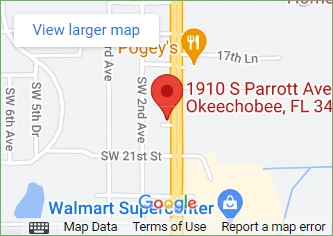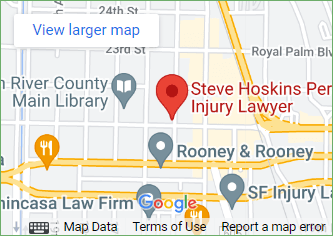Auto Accident Settlement
Types of Car Accidents
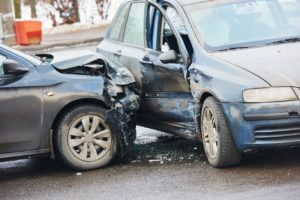
This resource project was created as a public service to detail the distinguishing factors in these accident patterns — and provide answers to questions most frequently sought after. For additional information and details on any given content, simply click on the title link!
7 Types of Car Accidents
Loss of control is most often the underlying cause for any driver involved in a traffic crash. What prompts this reaction to kick in depends on the type of car accident taking place. Each of the following types includes a brief description, as well as one or more methods of avoidance. Click on any title link to open a more detailed page!
One: Head-On Collision
You’re driving north on the road and suddenly another vehicle traveling south jumps the median and heads right for you. They have lost control and realize their last swerve got brought them here — and they are afraid to make another move. The most suggested evasive step is for you to steer to the right — which may give the approaching driver enough room to prevent a full head-on collision.
Two: Vehicle Rollover
When a car or truck (more frequently an SUV or van) flips onto its side, lands on the roof, or tumbles multiple times, it can cause occupants to be ejected. Unfortunately, there is no time to react, and the results of a vehicle rollover are serious injuries, at a minimum, with a high risk of fatality. When drivers and passengers have fastened their seatbelts, their survival rate is significantly increased.
Three: T-Bone Car Accident
One of the most dangerous collisions you can experience — the T-Bone car accident — happens when one vehicle crashes head-on into the side of another. Most frequently this “T” effect occurs on the driver’s side of the impacted car which can cause broken bones, a brain concussion, and even fatality. Because these collisions are usually sudden and unavoidable, your best outcome is when your seatbelt has been locked in place.
Four: Multiple Vehicle Collision
Another highly vulnerable traffic accident is a multiple vehicle collision — which involves three or more vehicles in a chain of events from a single event. These pileups can range from minimal to massive, resulting in a lot of confusion and multiple injuries, and fatalities. Whether you land in the mix may very well depend on your situational awareness and the distance you keep from others sharing the road.
Five: Sideswipe Collision
Whether you’re on a country road or a freeway, driving right next to another vehicle is quite risky. Any distraction by the other driver may cause them to drift from their lane — into yours — resulting in anything from a minor bump to a disabling blow. Avoid these crashes by staying clear of blind spots (yours and the other driver’s) and taking notice when others are driving too close to the lane divider.
Six: Side-Impact Collision
When one vehicle is broadsided (hit in the side by another driver’s front end) it is known as a side-impact collision. Most often, this type of car accident occurs at an intersection. Usually, there are witnesses and possibly there is a traffic camera atop the light, but it’s not a guarantee. You have a chance to avoid these crashes by slowing down as you approach the junction — whether or not you have the green light.
Seven: Single Car Accident
A single-car accident inherently involves one vehicle but this doesn’t mean its driver is always at fault. Generally caused when a single driver reacts by swerving to keep from hitting something — maybe an animal or weaving driver — and ends up colliding with a guardrail or tree, or an electrical pole. In these cases, the weather is often a factor that can present unavoidable hazards in your path. Your best bet is to slow down as you round a curve or draw near to a blind corner (allowing safer reactions).
Answers to Common Accident Questions
The following snippets are brief introductions to subjects that prompt the most frequent questions from readers. Each title link takes you to additional content on the subject!
What to Do After a Hit and Run Accident
You’re suddenly the victim of a hit and run accident. Do not attempt to pursue them, even if you are physically able. Just stop. Onlookers may follow but meanwhile, you need to focus on accepting help from others and evoking a 9-1-1 response. If either you or a witness can identify the escaping driver’s vehicle type and color it will certainly be helpful in their capture. They have committed a misdemeanor by leaving the scene, and if there are injuries the charge will elevate to a felony.
What to Do After a Minor Car Accident
You do not have to remain ‘in place’ after a minor car accident, just pull over and stop to prevent a chain reaction from other drivers. If the damage is less than $500, a police report or notice to Florida’s HSMV isn’t necessary, and your personal injury protection policy (PIP) should cover it. You may self-report online. However, you need to be aware that there is NO exception when injuries have occurred, and by law, there is a 10-day limit to report an accident (for either you or the officer).
What to Do After a Car Accident Injury
Always call 9-1-1 to have them dispatch the appropriate law enforcement for the jurisdiction of your car accident injury. Stay on the line with the operator until help arrives, which will include a medical team to ascertain all injuries sustained. Do not assume you have not been seriously injured — frequently more physical damage will become obvious in the next couple of days.
What to Do After a Rear-End Collision
Make sure 9-1-1 is called — if you are not able, ask anyone nearby to do so. Remain in place and do not exit the vehicle after a rear-end collision. Additional movements may cause more injuries or amplify those already sustained. The exception would be if there is a threat of fire or explosion, in which case every effort should be made to distance yourself from the crash site.
What to Do After a Car Accident: Checklist
To download or print our detailed checklist of What to Do After a Car Accident, please click on the title link above. For a quick answer here, we emphasize that you do the following:
- Call 9-1-1 to get a rapid response from law enforcement.
- Inform the operator of injuries in order to expedite paramedics.
- Do not leave the scene of a car accident (no matter who is at fault).
- Stay in place unless the impact was minor (if so, pull over out of traffic).
- Obtain the investigating officer’s card; it should have the case number notated.
- Other than the basic facts, do not discuss responsibility with anyone.
- Contact a local personal injury lawyer ASAP for a free consultation.
Verdicts and Settlements
$1.2 Million
$1.6 Million
Wrongful Death Settlement
$11.1 Million
Settlement for motorcycle accident
Locations
Ft. Pierce, FL 34950
Suite 203, Port St. Lucie, FL 34986
Okeechobee, FL 34974
Vero Beach, FL 32960
The hiring of a lawyer is an important decision that should not be based solely upon advertisements. Before you decide, ask us to send you free written information about our qualifications and experience.
We are a debt relief agency and attorneys. We help people file for Bankruptcy relief under the Bankruptcy Code. The hiring of a lawyer is an important decision that should not be based solely upon advertisements. Before you decide, ask us to send you free information about our qualifications and experience.
Hoskins, Turco, Lloyd & Lloyd © 2020 All Rights Reserved. Terms of Use and Privacy Policy
This site is protected by reCAPTCHA and the Google Privacy Policy and Terms of Service apply.
